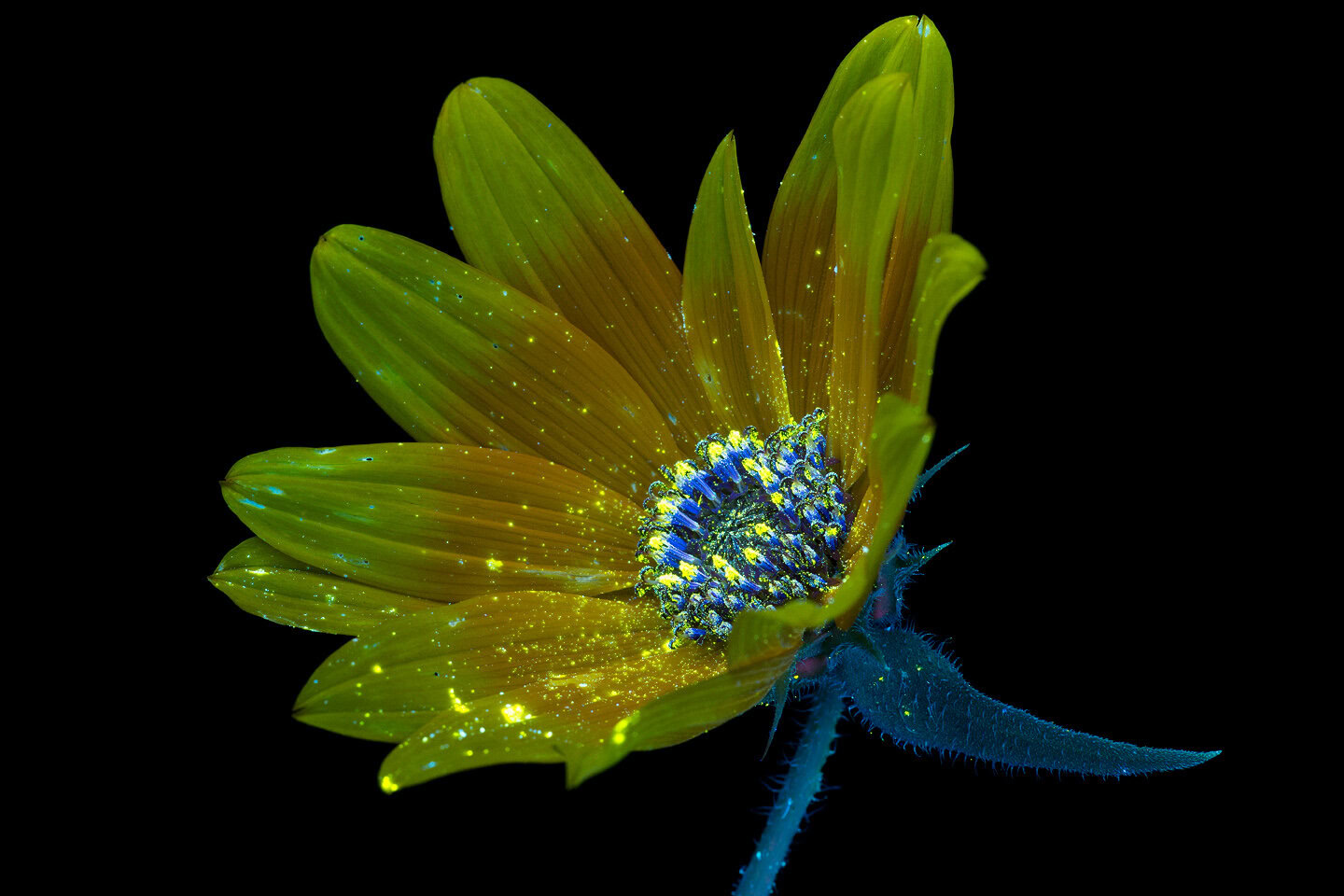Imagine for a moment you could perceive the world like a bee. Bees have the fastest color vision in the animal world, about five times faster than humans’, enabling them to navigate the world with extreme efficiency and speed. While humans might let their gaze wander over a flower field and appreciate the colors, bees perceive each individual flower as they zip by. Also, if you were a bee, you couldn’t see red, but you would see ultraviolet light humans can’t see, so you’d be able to detect ultraviolet flower colors. Bees actually have five eyes; three additional smaller eyes called ocelli help them navigate, a bee’s version of GPS.
“The superpowers they have make me feel so inadequate,” Alexandra Daisy Ginsberg says at her art studio at the Somerset House in London. “I can’t see polarized light; I can’t see the electric charge of flowers; I can’t smell the scent plumes from fields of flowers in the distance. I can’t memorize the locations of all the flowers I visited, and that’s just a small list of my failings as a human.”
Ginsberg’s journey into researching how pollinators perceive the world started in the spring of 2020, when the British artist was asked to design a sculpture to raise awareness about pollinators. “Instead of making a sculpture about pollinators, I thought it would be better to make a sculpture for pollinators,” she says, and points to studies that show a decline of 75 percent of pollinators over 27 years in Germany due to insecticides, pests and climate change. The data from other countries is similar. “That led me to the question, What do pollinators like? What would they enjoy?” she explains.

The result was the first Pollinator Pathmaker Edition, a 180-foot-long permanent garden installation with 7,000 plants at the Eden Project, Cornwall, that opened as part of the Create a Buzz project in 2021. In 2022 Ginsberg added 11 meandering beds in Kensington Gardens, London, and in 2023, a garden in the front yard of the Natural History Museum in Berlin followed by 15 community gardens around Berlin.
The post Seeing Like a Bee: ‘Pollinator Pathmaker’ Is Art for Insects appeared first on Reasons to be Cheerful.


